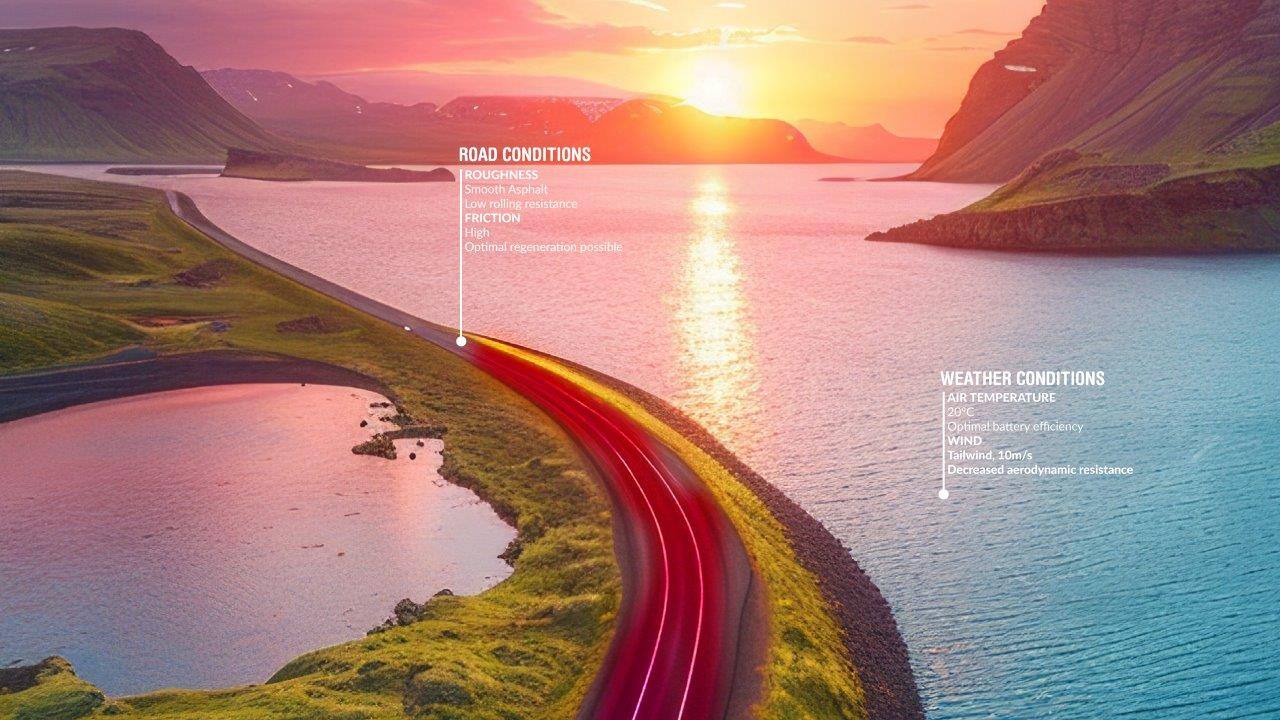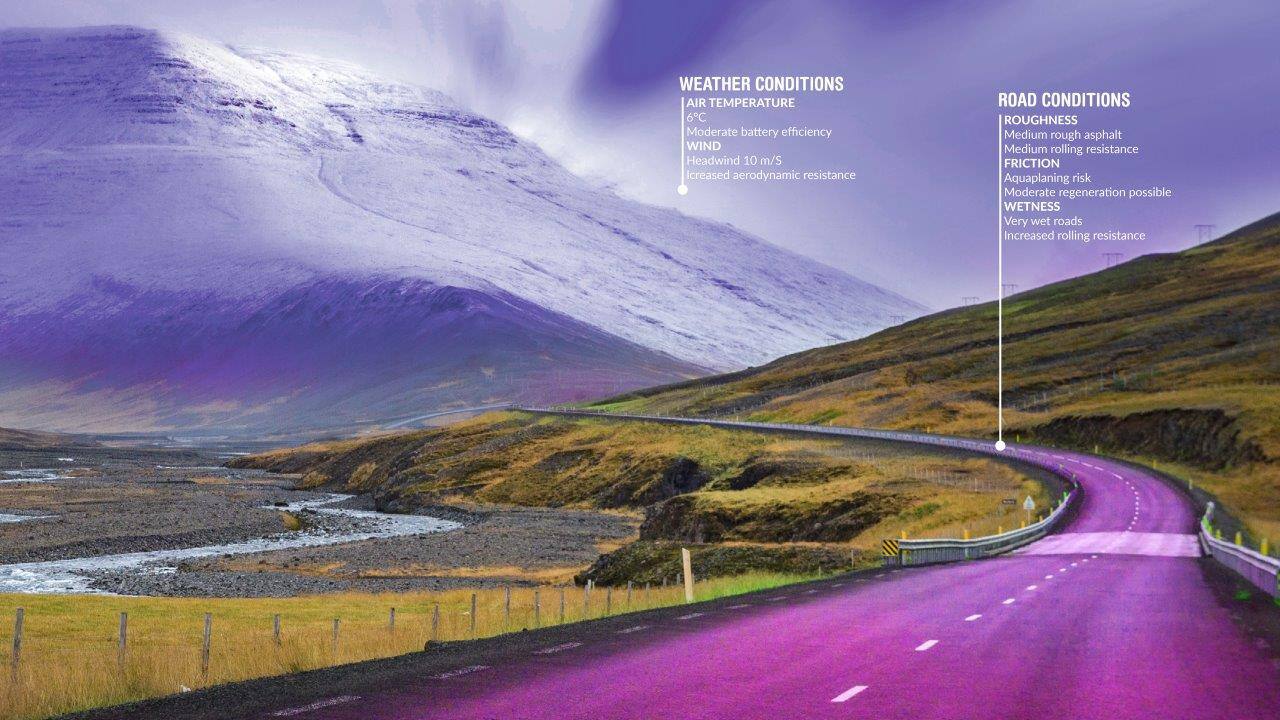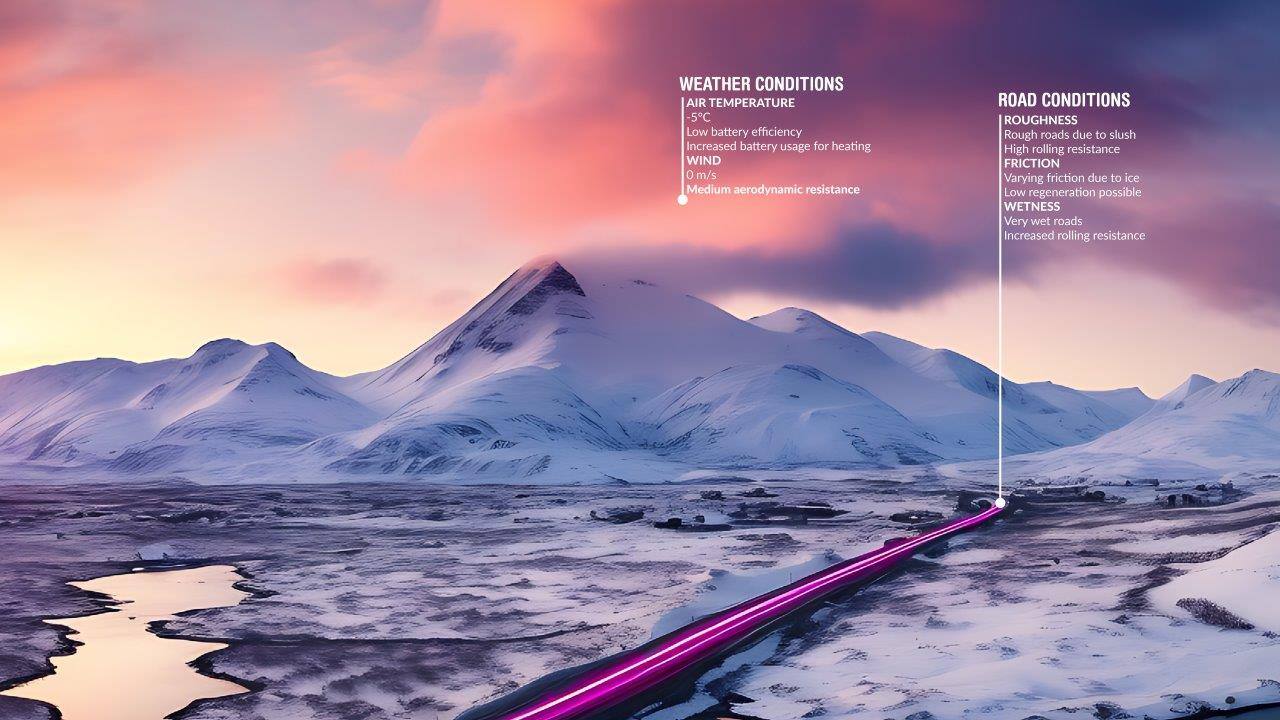Enhancing EV Range Accuracy with Real-Time Road and Weather Data

In the ever-changing landscape of electric vehicles (EVs), the concern over how far you can go - affectionately known as range anxiety - is a big topic for both drivers and the folks who make these cars. As we push the boundaries of EV technology, our goal is to give you peace of mind with range estimates that are as reliable as your morning coffee. But here's a twist: understanding the impact of road and weather conditions in real-time is crucial and often missed. Without this insight, nailing down an EV's range can be tricky, leading to those "oops, need to charge!" moments and a bit of worry behind the wheel.
The Challenge: Navigating the Unpredictable
Embarking on an EV journey brings its own set of adventures, especially when road and weather conditions enter the mix. These elements, often invisible and unpredictable without the right insights, significantly influence an EV's energy consumption. Smooth or slippery, sunny or stormy - every condition plays a pivotal role in how far you can go before the next charge.
Consider the following scenarios:
Use Case 1: Sunny Weather, Smooth Asphalt Road, Warm Weather

Use Case 2: Rainy Conditions, Windy, Rough Road

In contrast, this scenario presents several challenges. The headwind increases aerodynamic drag, causing the vehicle to expend more energy to maintain speed. The rough road surface and wet conditions further exacerbate energy consumption by increasing rolling resistance. Moreover, moderate battery efficiency at lower temperatures means the battery may require additional energy for heating, further reducing the available range. Here, the driver may find their expected range significantly reduced, leading to potential range anxiety and the need for an unplanned charging stop.
Use Case 3: Winter Conditions, Slippery Conditions and Slush, Cold Temperature

In the winter scenario, the challenges multiply. Cold temperatures severely impact battery efficiency, with a significant portion of energy diverted to heating the cabin and the battery itself. Slush and icy roads lead to high rolling resistance and low friction, which reduces the effectiveness of regenerative braking. The combined effect of these factors results in a dramatic increase in energy consumption and a steep decline in the vehicle's range. The driver in this scenario may struggle with severe range anxiety, particularly if they are unaware of the road conditions ahead and are unable to plan appropriately for charging.
The Impact on Automotive Manufacturers
For automotive manufacturers, the ability to provide accurate range estimates is a key factor in building consumer trust and ensuring the success of EVs. Without incorporating real-time road and weather data into range calculations, manufacturers risk delivering vehicles that consistently underperform in real-world conditions, leading to customer dissatisfaction.
Moreover, inaccurate range predictions can lead to unplanned charging stops, which is not only inconvenient to drivers but also stress the charging infrastructure, especially in areas where chargers are less readily available. This issue is particularly critical for EV adoption in colder climates or regions with variable weather conditions.
How NIRA Dynamics Can Support Better Range Calculations
To address these challenges, NIRA Dynamics offers advanced software solutions that provide real-time data on road conditions, weather, and vehicle dynamics. By integrating this data into an EV’s range calculation algorithms, automotive manufacturers can significantly improve the accuracy of range predictions.
Road Surface Conditions (RSC): NIRA Dynamics’ RSC technology provides real-time information on road conditions such as slipperiness, wetness, and roughness. By knowing what lies ahead, the vehicle can adjust its energy consumption predictions, ensuring more accurate range estimates. By incorporating external weather data into RSC we can further improve the view of what is happening around the car, and in front of the car, or what is happening within the next hour of driving. It can significantly improve the range calculations and thereby buildina stronger trust from the driver.

Building Trust Through Accurate Predictions
Incorporating real-time road and weather data into EV range calculations is no longer a luxury—it’s a necessity. Automotive manufacturers that embrace this approach can offer their customers a more reliable and stress-free driving experience, reducing range anxiety and improving overall satisfaction. By partnering with NIRA Dynamics, manufacturers can access the tools and data needed to make their range predictions as accurate as possible, ensuring that drivers reach their destinations with confidence, no matter the conditions.

In the journey towards widespread EV adoption, accurate range estimation is a critical milestone. With the right data and technology, automotive manufacturers can lead the charge, offering vehicles that not only meet but exceed driver expectations, regardless of the road ahead.




